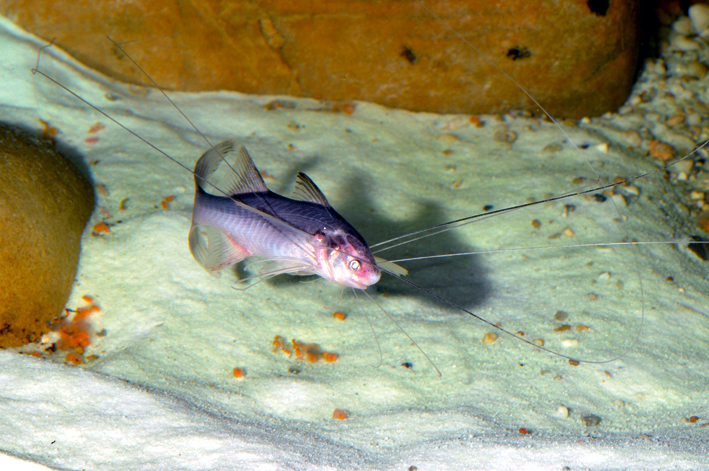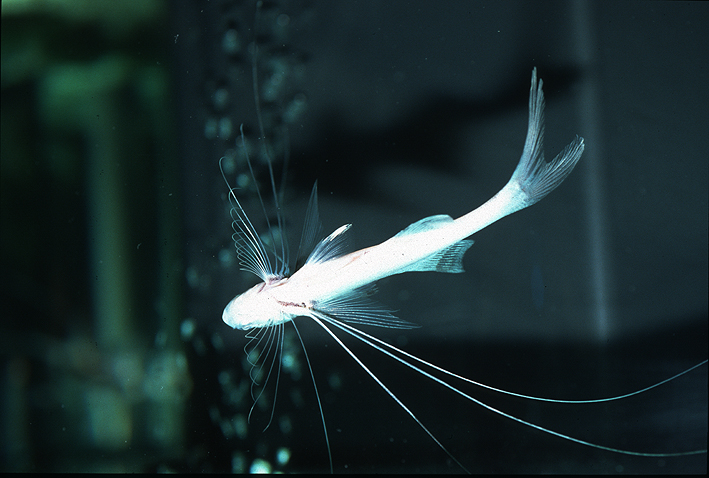Introduction
Polynemus paradiseus is a brackish water fish from the Asia.
This sheet is currently being prepared. The texts currently proposed come from our data model or are being drafted. To request priority for this content, you can write to us HERE.
Who is it?
Morphology
-
Type
-
Average size30 cm
-
Maximum size35 cm
-
Type
-
Average size30 cm
-
Maximum size35 cm
How to recognize This fish ?
Polynemus paradiseus measures between 30 and 35 cm.
Behaviour & Life cycle
-
dietcarnivorous
-
Sociabilitysolitary
-
territorialNo
-
Way of livingnocturnal
Polynemus paradiseus is a fish solitary naturally found on the bottom. This species is carnivorous . This fish lives mainly at night. Usually, it leaves its hiding place and starts to be active once it gets dark.
n general, this species does not care much about other animals crossing its path.
Reproduction
-
Reproductiondont le mode de reproduction est encore inconnu
Polynemus paradiseus is a fish dont le mode de reproduction est encore inconnu.
Harmless species
This species does not represent any particular threats to humans when encountered in its natural environment.
Origin and distribution
Conservation status of populations (IUCN)
What is its habitat?
Natural environment characteristics
-
Temperature24 - 26 °C
-
gh (hardness)30 - 100
-
FlowMedium, Slow and Stagnant
Biotope presentation
Polynemus paradiseus is found in rivers, marshes and seaside creeks. With the influence of the tides, the water changes constantly in salinity. The acidification of water comes from the decomposition of plants. This phenomenon changes the color of the water, which tends to turn brown. In some areas particularly rich in organic matter, the water is so dark that it is called "black water".
To go further
Sources & Contributions
Participation & Validation
The Fishipedia team and specialist contributors are committed to providing high-quality content. However, although the information comes from scientific sources or testimonials from specialists, the cards may contain inaccuracies.

Robert Allgayer
Translation
Translation done with the valuable contribution of our translators, who make this information available to a wider audience. We sincerely thank them for their commitment.













